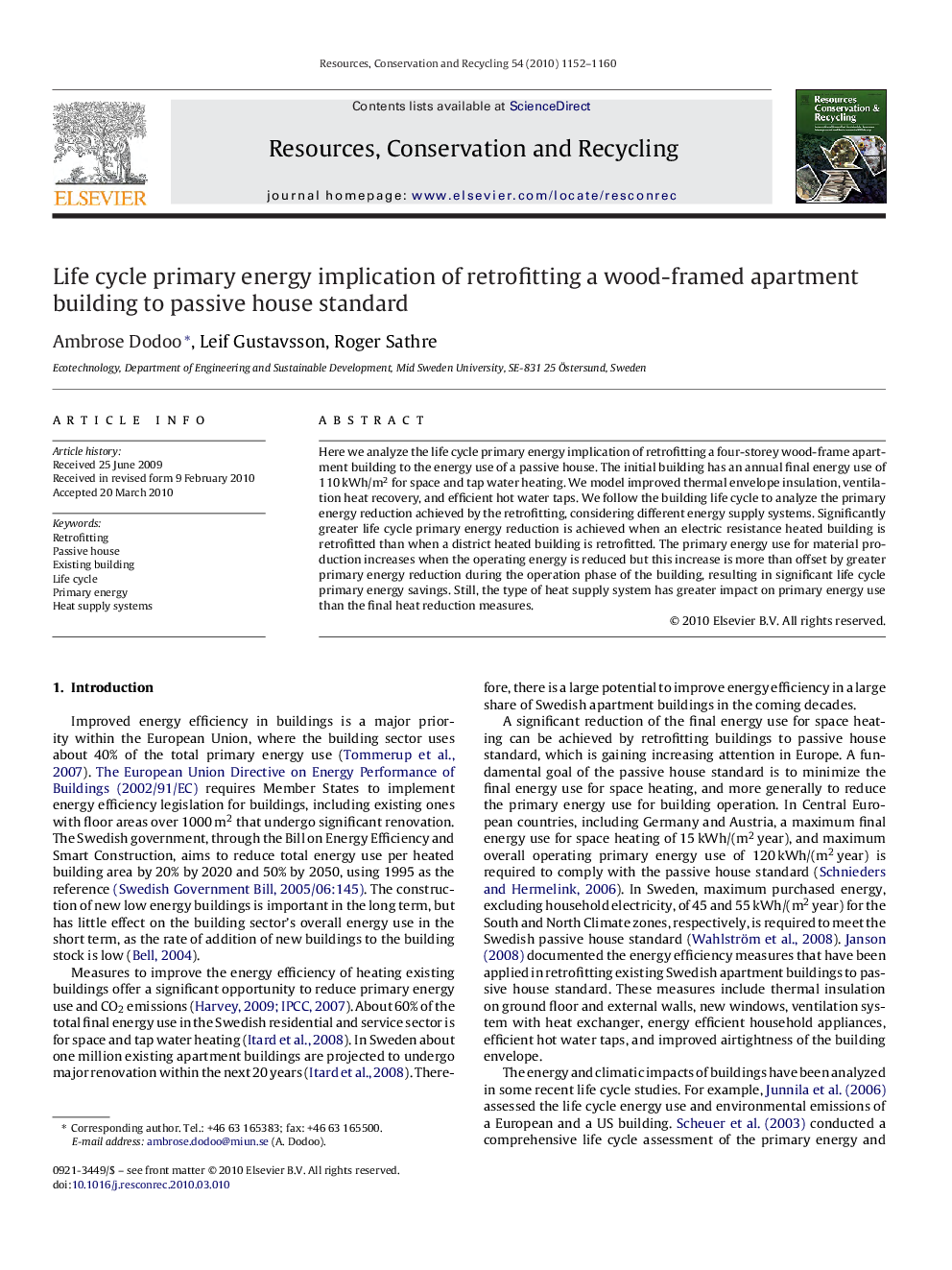| Article ID | Journal | Published Year | Pages | File Type |
|---|---|---|---|---|
| 1063802 | Resources, Conservation and Recycling | 2010 | 9 Pages |
Here we analyze the life cycle primary energy implication of retrofitting a four-storey wood-frame apartment building to the energy use of a passive house. The initial building has an annual final energy use of 110 kWh/m2 for space and tap water heating. We model improved thermal envelope insulation, ventilation heat recovery, and efficient hot water taps. We follow the building life cycle to analyze the primary energy reduction achieved by the retrofitting, considering different energy supply systems. Significantly greater life cycle primary energy reduction is achieved when an electric resistance heated building is retrofitted than when a district heated building is retrofitted. The primary energy use for material production increases when the operating energy is reduced but this increase is more than offset by greater primary energy reduction during the operation phase of the building, resulting in significant life cycle primary energy savings. Still, the type of heat supply system has greater impact on primary energy use than the final heat reduction measures.
